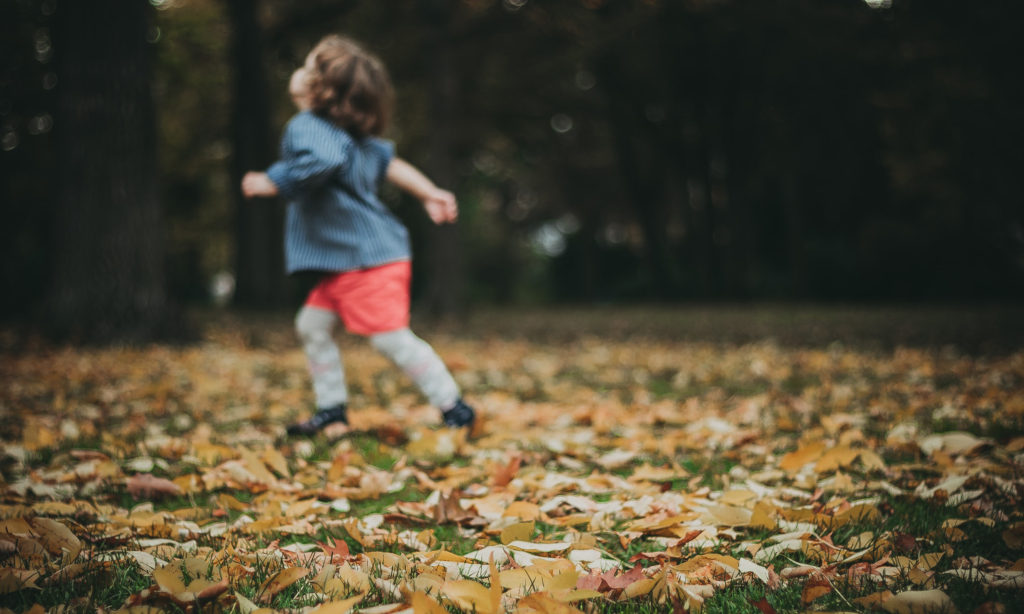Note: This is a guest post from Denaye Barahona of Simple Families.

What do you want first, the good news or the bad news?
Let’s start with the bad news. You can’t one-click-Amazon-order your way out of dealing with boredom in childhood. We have all desperately wanted to find the “perfect” toy to keep our children engaged and happy. We may feel as we have found it briefly, but the novelty passes with time and we find our way right back into the online shopping cart.
It’s easy to fall into a cycle.
Kids get bored? Buy them a new toy. When the newness wears off? Rinse and repeat.
Which brings me to the good news, you can put your credit cards away. Because kids don’t need toys to play. In fact, most kids (including my own) spend less time than you think engaging with toys. Don’t get me wrong–they are still busy little bodies. But when you have fewer toys, you will see the creativity and innovation abound. But the play doesn’t revolve around toys and a “playroom”.
In fact, I often spy play that sneaks out of its designated playspace, winds its way through the kitchen, flutters through the backyard, and lands in a secret drawer filled with treasures collected along the way.
Toys can be amazing tools for play, but let’s consider other important ways to play and pass the time without buying toys.
1. Nature
Humans need nature. It doesn’t have to be a proper hike in the woods, just breathing the fresh air and watching a snail cross the sidewalk can do. Turning over a rock to observe some bugs. Feeling the wind on your face. These all count as engaging and enjoyable experiences in childhood. Play in nature can look like balancing on a fallen tree, jumping from stump to stump, and building a fairy house in anticipation of magical visitors.
Play in nature doesn’t have any prescribed way of looking. Some children go “all in” and jump into puddles and others just observe and keep a distance from all creatures. Regardless of how your children are spending this time outdoors, it is valuable. We know that our bodies and our brains need nature to thrive.
2. Imitation
Our children learn through experimenting and exploring, but they also learn through imitation. This means you might find them hanging around your feet when you are trying to take care of “real life” stuff like dishwashing and cooking.
When possible, I challenge you to invite them in and let them imitate you. Although it might not seem playful in the traditional sense, play is defined as “activity engaged in for recreation and enjoyment.” If your children enjoy grabbing a stool and splashing around in the bubbly dishwater, that’s play.
The hardest part is taking a deep breath, slowing down, and making space for this type of play.
3. Loose Parts
Handfuls of sparkly rocks. Collections of international coins. An array of treasures from a recent beachcombing adventure. Scrap pieces of fabric. The list goes on.
You’d be amazed at the play that can come from loose parts that are gathered together. “Loose Parts” play is using natural or scrap materials to create, imagine, and support play activities. This type of play encourages problem-solving and divergent thinking. So next time you go to throw away those toilet paper rolls—think again! The possibilities are endless. And they are free.
4. Books
Much like a stage performance, play often has “scripts” or stories. Children’s play typically involves pretend through acting out these scripts that they either invent or hear in stories. When we keep them surrounded in good books, we are enhancing their literacy skills, but we are also giving them opportunities to launch off in new play scripts based on the books they are reading.
Fill their minds with warm, beautiful stories and you just may see the results in their play.
5. Household items
Minimalists don’t use top sheets on their beds. Or maybe that’s just me? I made that up. When I purchase a set of sheets, the fitted sheet goes on the bed and the flat sheet goes to the kids. That sheet transforms into a fort, a sled to pull each other around, and even a cape or a makeshift sari.
Household items like sheets, towels, and pans can provide incredible options for open-ended play in childhood.
But I’m telling you something that your children already know: Play is everywhere in our lives. Our children have a magical way of bringing it to everything that they do.
Our job as parents is to start seeing that play in the most unexpected ways and places. When we do that, we can let go of the need to buy all the toys to keep them happy. Because with fewer toys, children can actually do so much more.
***
Denaye Barahona Ph.D. is a mother of two and the founder of Simple Families, a podcast and community for families interested in minimalism with kids, family wellness, and positive parenting. Denaye has a doctorate in child development and over a decade of experience in coaching parents to more harmonious lives with children.
—
If you would like to know more about this topic, our new issue of Simplify Magazine takes a deep dive into the theme of Work + Play. Get a lifetime subscription to the magazine here.
from Becoming Minimalist https://ift.tt/3eA8CrQ
Aucun commentaire:
Enregistrer un commentaire